The Cold Cases of VAB
Architectuul turns ten years old and, in order to celebrate such an important anniversary, launches a research project dedicated to the most important architecture event in the world, the Venice Architecture Biennale - VAB!
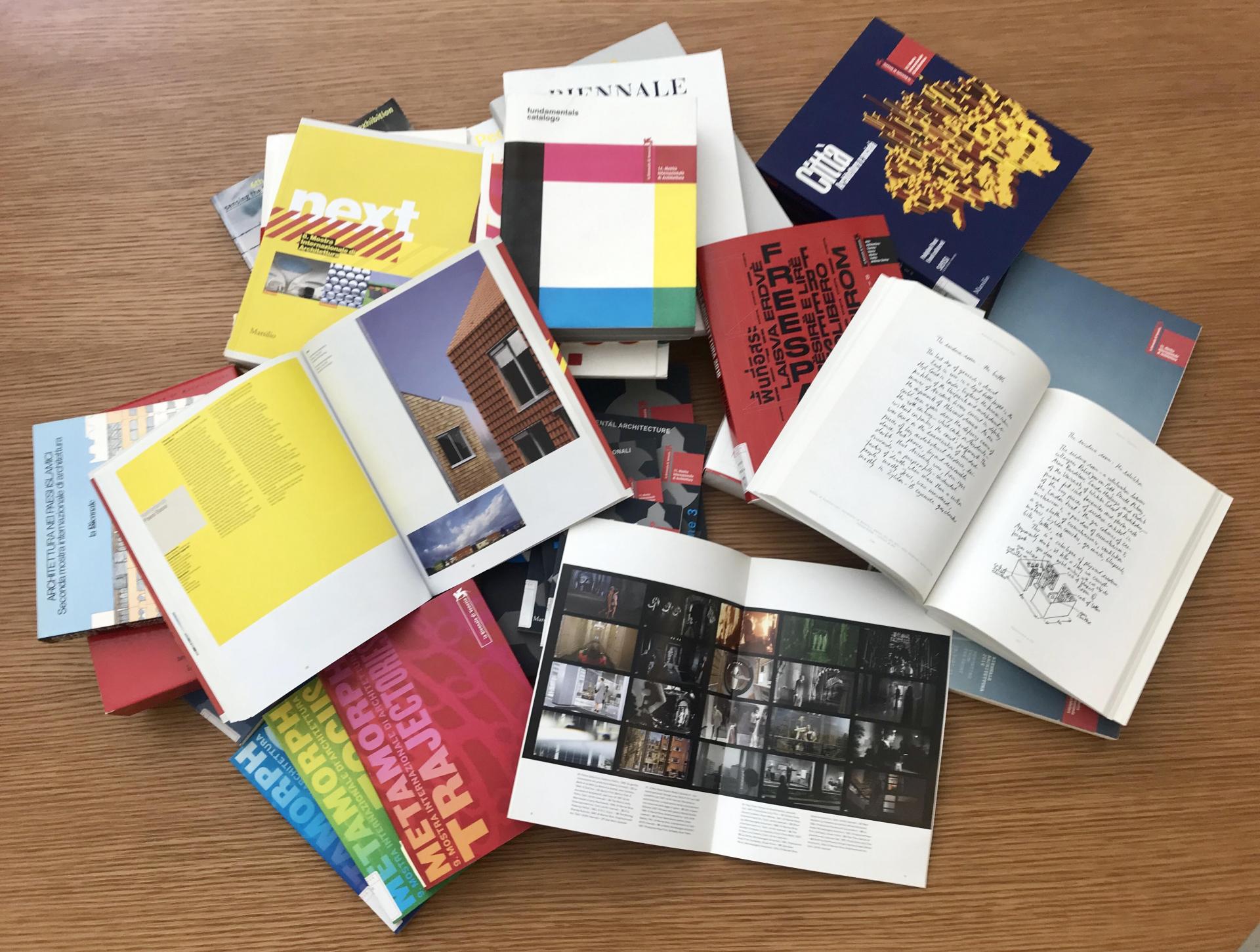
Catalogues from the previous Venice Biennials. | Photo © Stefano Gobbi
True to the spirit that animated the birth of the platform and nourished its development throughout all these years, its open worldwide community traces back the history of the Venetian event by investigating its different editions, their protagonists and the many more or less known events that characterized them, through the textual contributions of professionals, historians, curators, critics, scholars or simple enthusiasts from all over the world who already collaborated with Architectuul in the past.
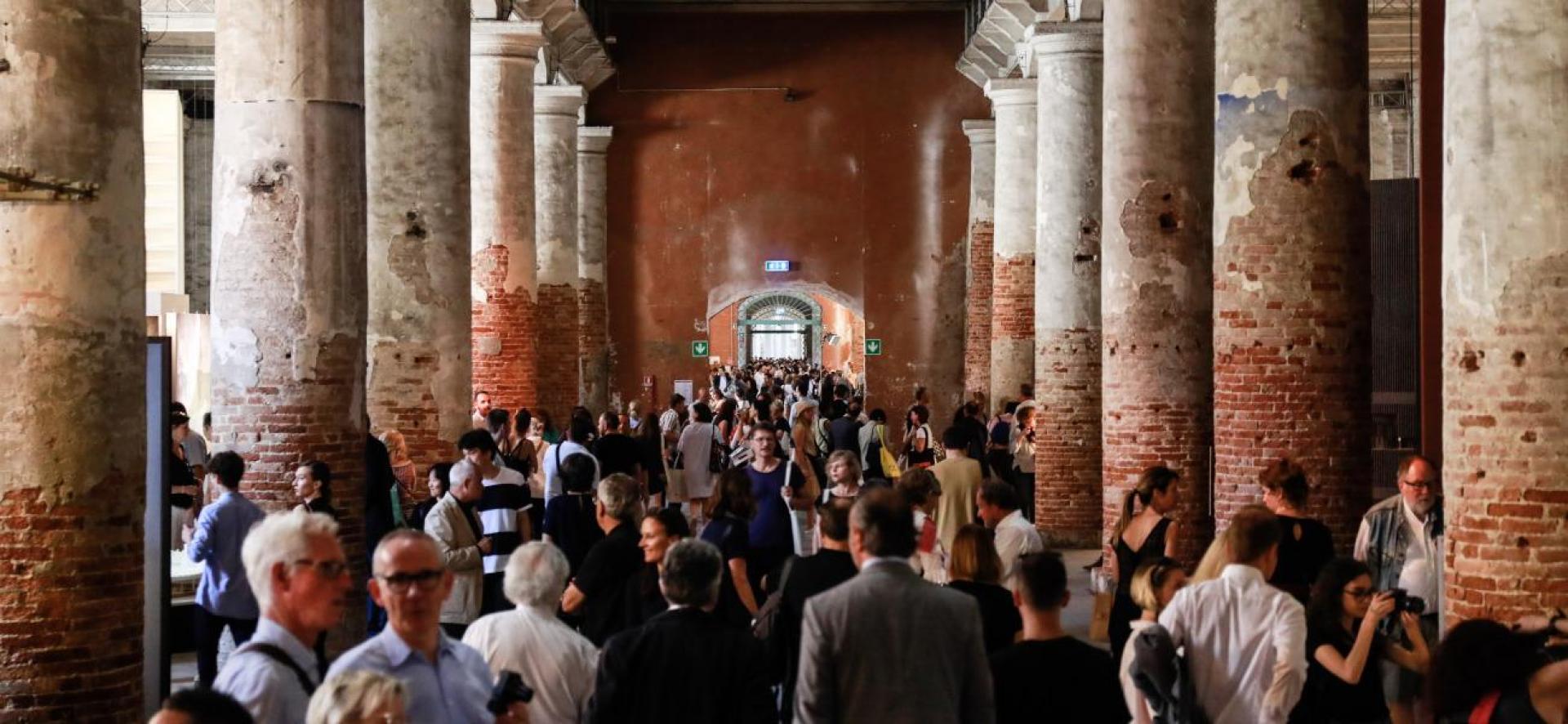
Just as in Venice curators are offered with a room to work on in order to develop a personal take on the main theme of the exhibition, Architectuul’s VAB project aims at providing a platform for people to look back at the previous editions of the Venetian event, its celebrated triumphs, spectacular failures, and their endless facets. Each and every one of them is considered as a ‘cold case’ worth being reopened and investigated further to shine a light on a particular show, an event or those people that have often been overlooked or deserve being remembered.
The VAB project will not feature academic essays nor dissertations but instead short personal stories, when not anecdotes, aimed at taking readers to the lagoon city and back in time, behind the scenes of an initiative that, through its ups and downs, always represented the gathering moment for the international architectural community, initially restricted to a few close friends and then gradually enlarged to become an unmissable appointment on the global cultural agenda.
The last decade has seen the development of countless curatorial studies and, with them, the publication of as many books on the history of exhibitions as well as on those exhibitions that made history. A little later the research was extended to architecture shows that were placed under a magnifying glass and inevitably this led to scrutinize the largest architectural event of all, the one that for almost half a century, at more or less regular intervals, takes place in Venice.
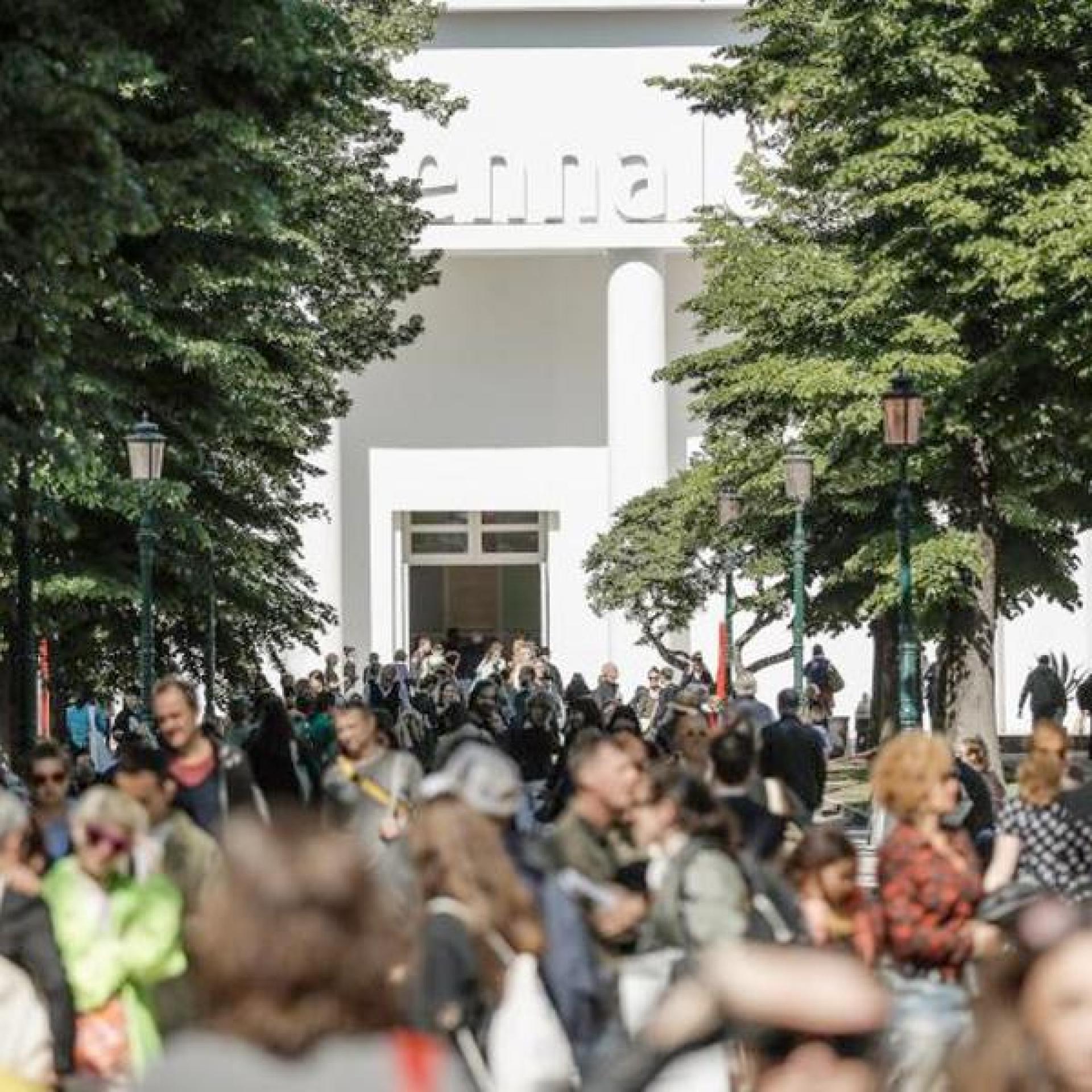
Born in the aftermath of the ideological and cultural crisis that shook Italy and the western world at the end of the 1960s, the Venice Architecture Biennale can be considered a work in progress developed through the different approaches of its several directors, sometimes contradicting themselves from one edition to another.
The first real display of architecture in Venice dates back to 1968, when within International Art Exhibition of the Biennale Carlo Scarpa curated Linee della ricerca contemporanea: dall’informale alle nuove strutture bringing together within a single space laid out by Scarpa himself the work of artists, photographers, set designers, graphic designers, ceramists and architects in order to achieve that integration between the various artistic practices to which the Biennale has always aimed.
Nevertheless, unlike the Art Biennale from which it stemmed and despite the many recent studies and investigations mentioned earlier, it is still difficult to precisely indicate the first edition of the Venice Architecture Biennale and erratic has been its cadence so far.
Its 17th edition was meant to take place in 2020, the year the COVID-19 pandemic not only forced the organizers to postpone the event but also took the life of the man who envisioned it in the 1970’s: Vittorio Gregotti. In 1975 the latter was commissioned to reformulate the Biennale of Art, opening it to the public debate, taking it out of the Arsenale Gardens and extending it to the city and the Veneto region. It is for all these reasons that Gregotti decided to include architecture and, by doing so, renaming the event International Exhibition of Visual Arts and Architecture, an appellation with which the reformed Biennale was officially inaugurated and, for the first time in its history, developed around the unifying theme of the environment, foreseeing national participation.
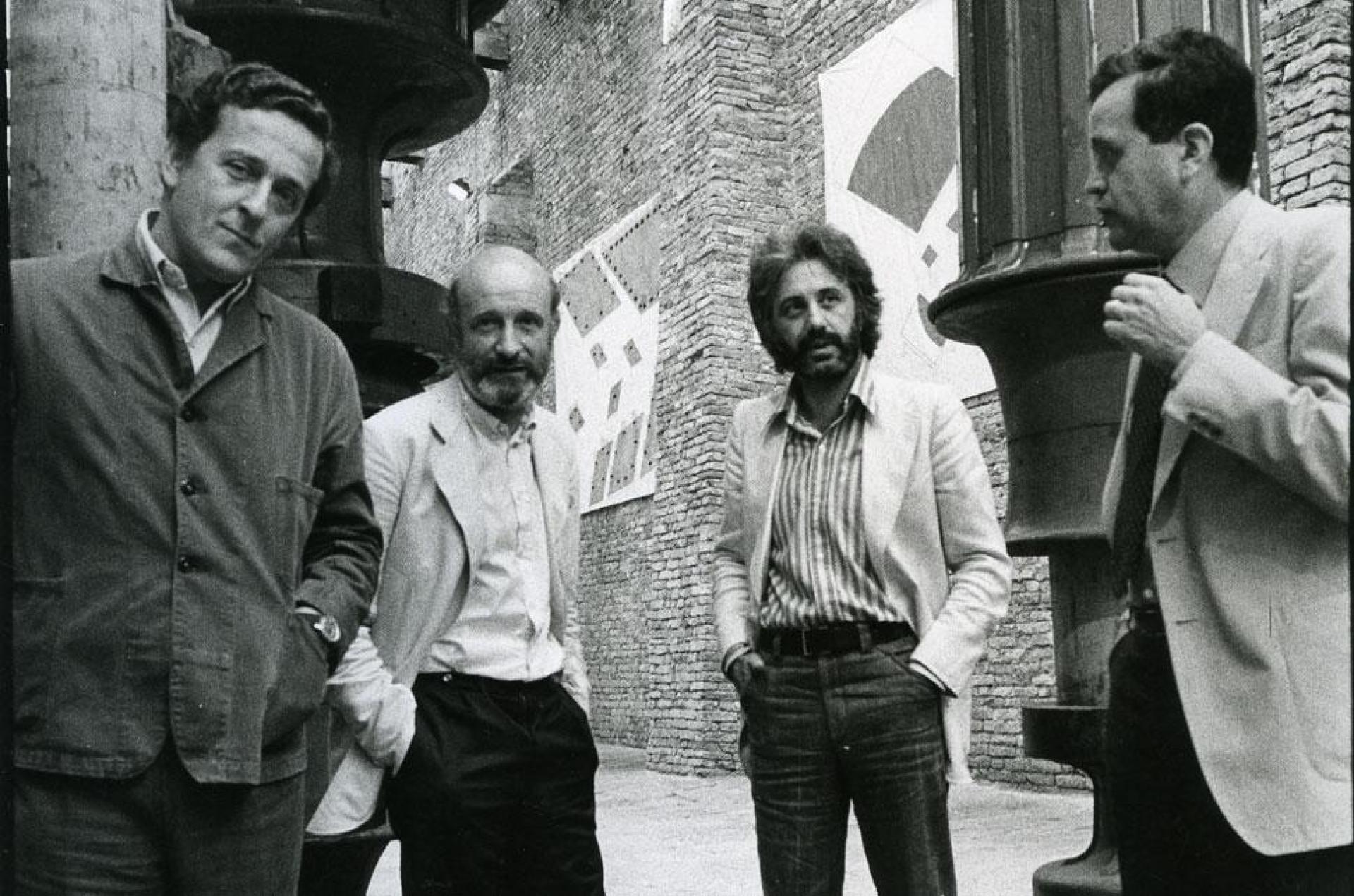
From left to right: Carlo Ripa di Meana (President of the Venice Biennale), directors Vittorio Gregotti (Visual Arts and Architecture), Luca Ronconi (Theatre) and Giacomo Gambetti (Film and Television) in 1975. | Photo © Lorenzo Capellini
In that same year, Gregotti also anticipated the next International Art Exhibition with a series of one-off events aimed at relaunching the Biennale and communicating its new cultural policy. It is in this context that one should consider the Proposte per il Mulino Stucky exhibition set up at the Magazzini del Sale, where the results of the open idea competition for the recovery of the former unused flour mill threatened with demolition were presented. It was first occasion in which a common theme for the confrontation between art and architecture was proposed, an approach adopted in all ensuing editions starting with Ambiente, partecipazione, strutture culturali in 1976.
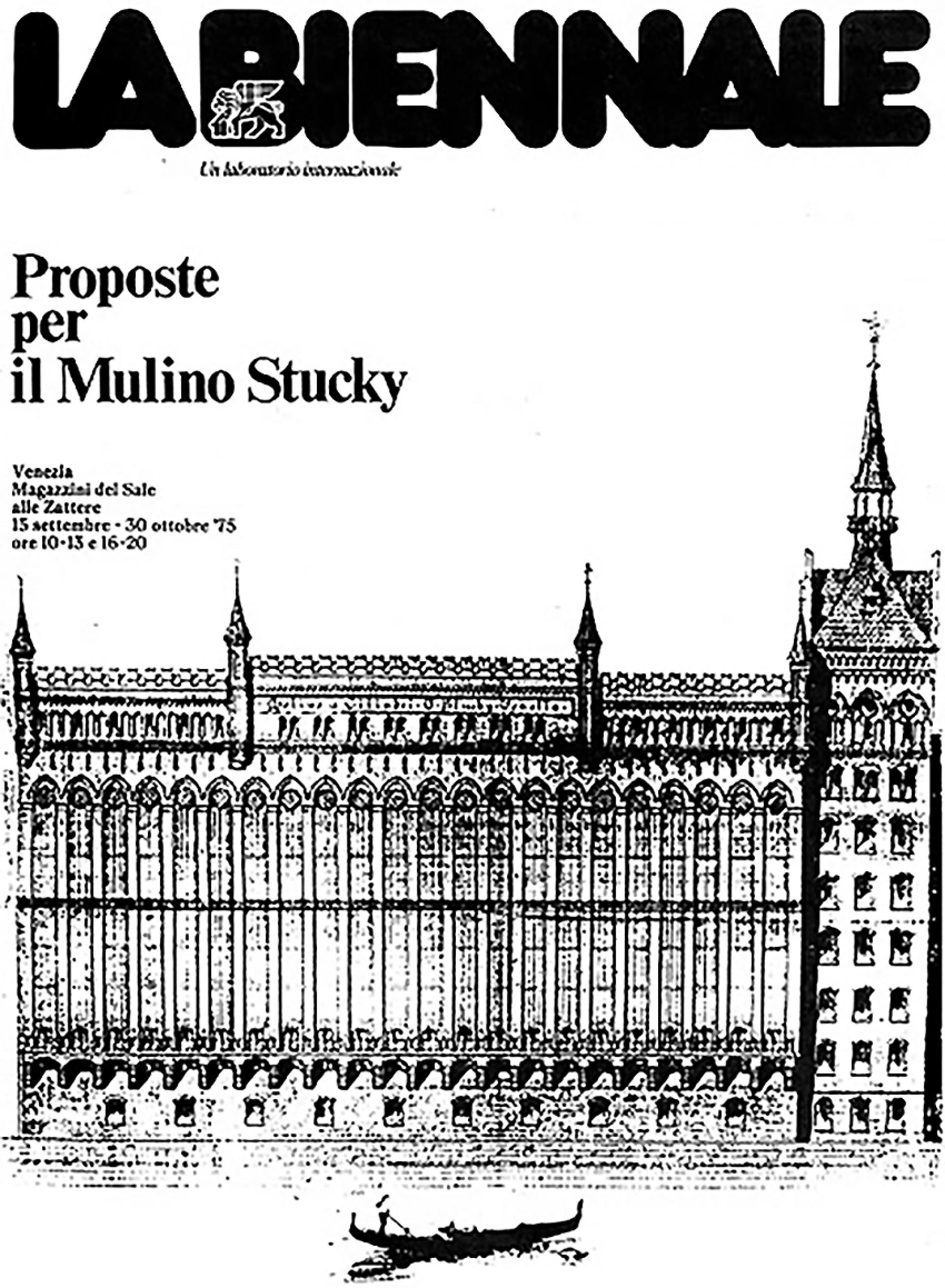
In compliance with the Biennale reform, that same edition was characterized by a greater opening to new areas of interest, such as architecture, presenting three different exhibitions simultaneously set up in as many locations of the lagoon city: one dedicated to design (Werkbund 1907. Origini del design), one to the history of contemporary architecture (Razionalismo e architettura in Italia durante il fascismo) and one on the future of the discipline through the comparison between the European and the North American schools (Europa-America, centro storico, suburbio). This approach showed greater sensitivity to everyday issues as well as to the general public, trying to present the initiative not only as exclusively cultural but also capable of attracting tourists. Since the mid-eighteenth century, architecture exhibitions had always been the subject of public debate and it is in such a long lasting tradition one should place the conference ‘Quale Movimento Moderno’ hosted at the Palazzo del Cinema on the Lido of Venice where, as in CIAM and Team 10 gatherings before, architects from both Europe and the United States discussed the possible future of architecture and its practice.
According to Vittorio Gregotti himself, those initiatives were mostly carried out quickly and without relevant success, but all were meant to lay the foundation of Utopia e crisi dell’antinatura. Intenzioni architettoniche in Italia, the first true architecture exhibition opened in 1978.
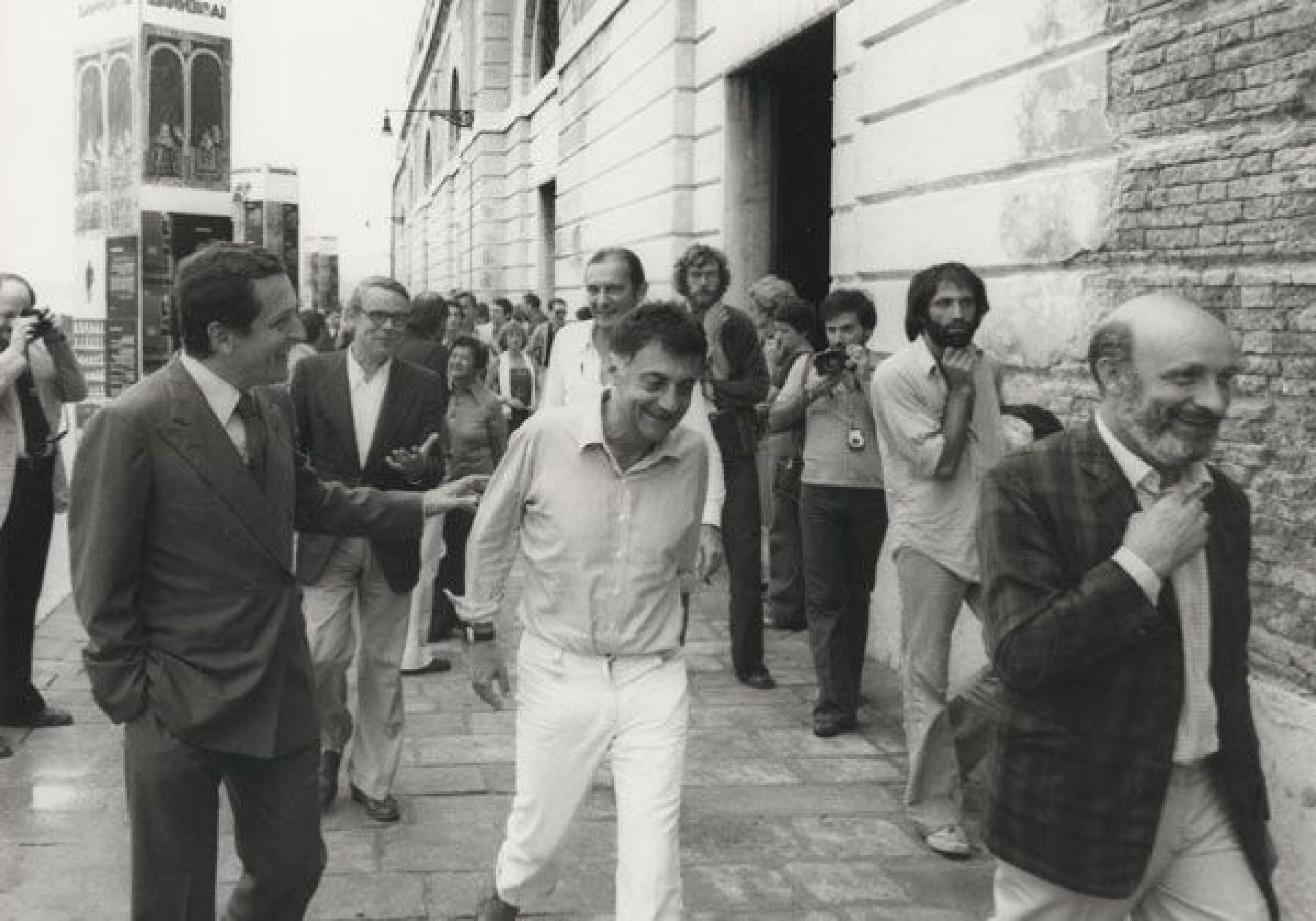
From left to right: Carlo Ripa di Meana, Carlo Aymonino (behind), Aldo Rossi and Vittorio Gregotti in 1979. | Photographer unknown
To Gregotti’s somewhat elitist approach followed the popular one chosen by Paolo Portoghesi who anticipated the inauguration of the 1st International Architecture Exhibition in 1980 by entrusting Aldo Rossi with the realization of that floating structure known as the ‘Teatro del Mondo’, thus starting a dialogue with the city and that promotional communication strategy culminating with the celebrated ‘Strada Novissima’ in the Corderie dell'Arsenale, turning architecture into a theme of public debate through its spectacle and festivalization.
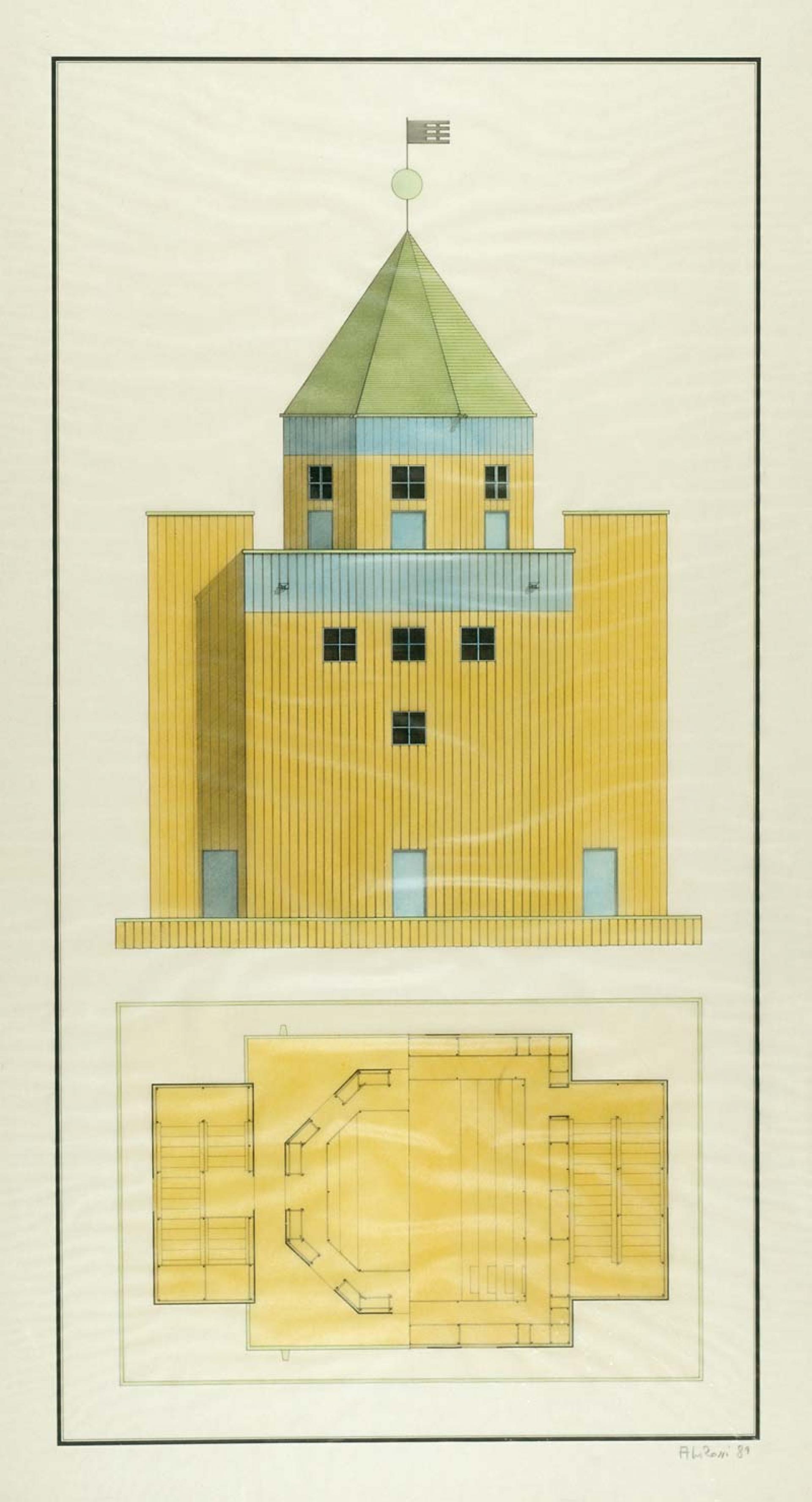
That’s more or less where Architectuul’s VAB project starts from.
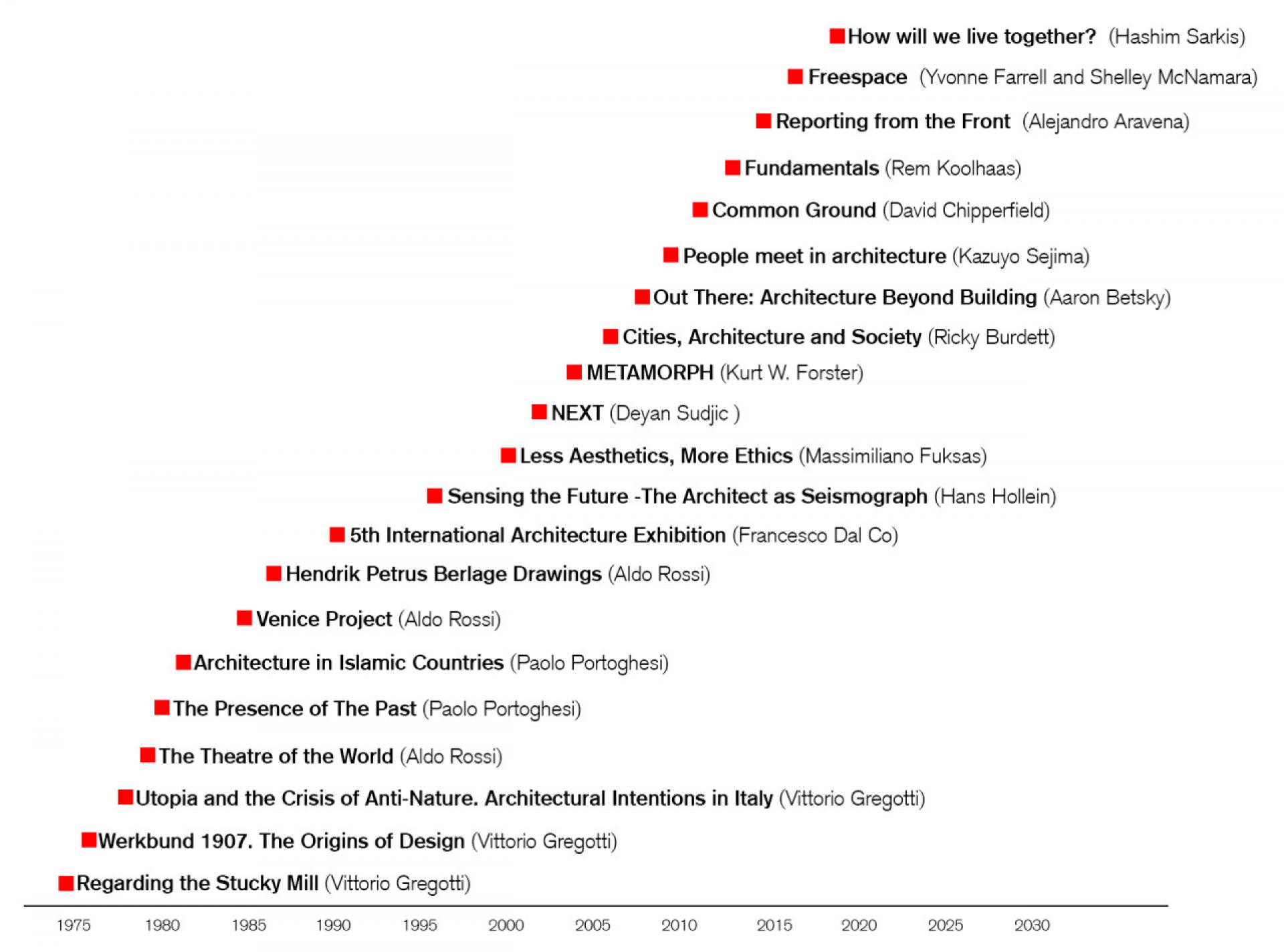
We hope you enjoy this endeavor as much as we enjoyed discussing and developing it with the help of all those who generously contributed with the stories you’ll be reading in the up and coming months.
Alessio Rosati
In Vino Veritas Biennale Style!
It was the Vernissage days at the 2014 Biennale, and for me those of the Vernissage are the most exciting days to visit the exhibition, more for the fact that you get to meet with old friends than for the presented works as because of the large number of people you can never experience it as you should. During the Vernissage one usually spends the morning and afternoon visiting the pavilions openings, meeting up with friends and of course having a lot of Aperol spritz. And evenings are usually reserved for the parties.
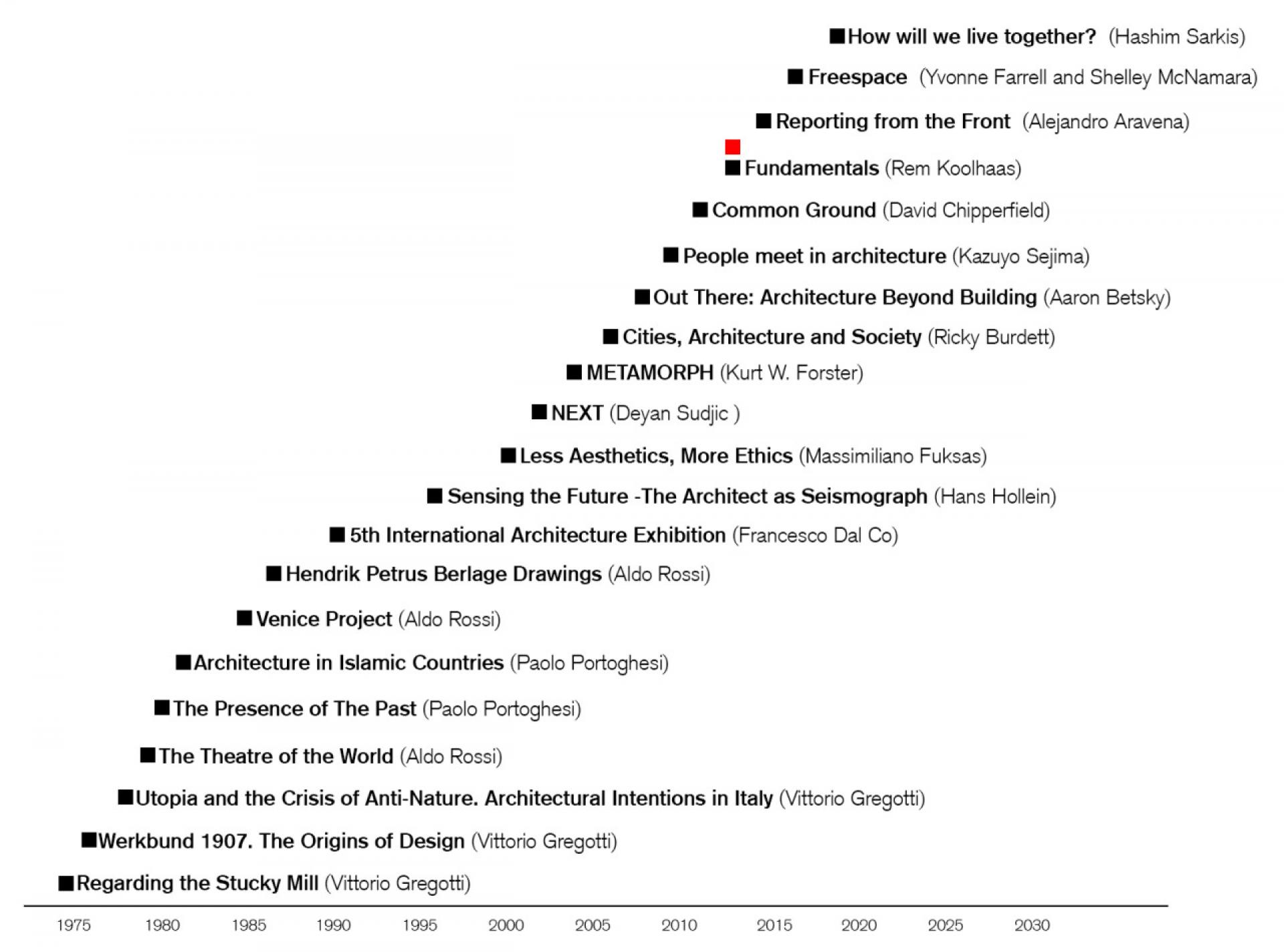
Read also “Teatro del Mondo: An Odyssey”
That was the second time that I was involved with the Kosovo National Pavilion as Commissioner on behalf of the Ministry of Culture after our first participation as Kosovo at the Biennale in 2012.

Kosovo National Pavilion in 2014 | Photo © Andrea Avezzu’
On the second night of the Vernissage I was supposed to go to the Turkish party, which was organized by Murat (Tabanlioglu) at one of the Venetian islands, but during the day I met up with two close friends Winy (Maas) and Jan (Knikker) from MVRDV who invited me to a somewhat private dinner at a restaurant nearby San Marco Square. “You have to come and you’ll going to love it, but it’s a strictly personal invitation”, Jan told me.
It was a bit difficult to reach the place as my phone battery was very low and I was trying to find it without using Google Maps. I finally did find it and, although I thought I was late, apparently most of the guests also got lost and everyone was showing up at around the same time.
So I entered this room that was not larger than 4x4 meters, with a large table in the middle and people sitting around it, and a second row of chairs behind them. I set at one of the chairs close to Jan and could identify some of the people sitting at the large table. Apparently Winy was the moderator of this “debate” and the other people attending were Aaron Betsky, Patrik Schumacher, François Roche & Peter Noever. Anyhow, before the debate started, a gentleman, that I later learned was Robert White, welcomed everyone to the second night of the “Dark Side Club” talks and asked for drinks to be served.
After drinks were poured and Winy made his short opening speech, which was supposed to set the tone of the debate, each participant around the table had his own turn to talk about the curators’ work. I’m not sure if it was the drinks, the late hours or the intimacy of the place, or maybe all of them, but all of the participants around the table took their terms at criticizing Rem (Koolhaas). Everything went on smoothly, with all participants jabbing Rem and telling architecture jokes, but the mood suddenly changed after Patrik (Schumacher) declared that the curated work was brilliant and that the future of architecture was parametric!
This was the moment the “architecture roast” started and the gloves were off! Roche, Noever, and Betsky were all yelling at Patrik. I must say that after few minutes I felt bad for Patrik being called a narcissist, childish, a preacher, etc., and at one point was thinking of standing up and screaming he “knows that parametricism is just a tool" but I think he was enjoying the fact that the debate focused on him and also Betsky anticipated me by telling Patrik that he doesn’t like using offensive words but he felt the need to say to him to “F..k off”. After that he stood up and left the table!
Patrik defence of his view and others’ criticism continued until the end of the debate which apparently lasted for another 2 hours although to me it seemed much shorter than that.
I must say that this was the most fun I had in a Biennale-related event and I was told that these kinds of matchups of participants take place on purpose so the debates are always super interesting. This provided me with the incentive to do something similar back home at the Kosovo Architecture Festival, which involved those Future Architecture young creatives we invited to the event.
Probably because of the young age of our participants “Debates over Beers" were not that serious and they ended up with the young fellows imitating “starchitects” and raising philosophical questions on the meaning of life and why one should become an architect, with the latter definitely being the result of drinking too much beer!
I’m really sorry that just minutes into the Venice “Dark Side Club” debate my cell phone died and couldn’t take any photo to show. All I can add is that I did ask everybody in the room to lend me their power bank to recharge my phone but no one was willing to do it!
There is a link at uncube magazine blog on the DSC I participated at.
***
VAB 01: Bekim Ramku
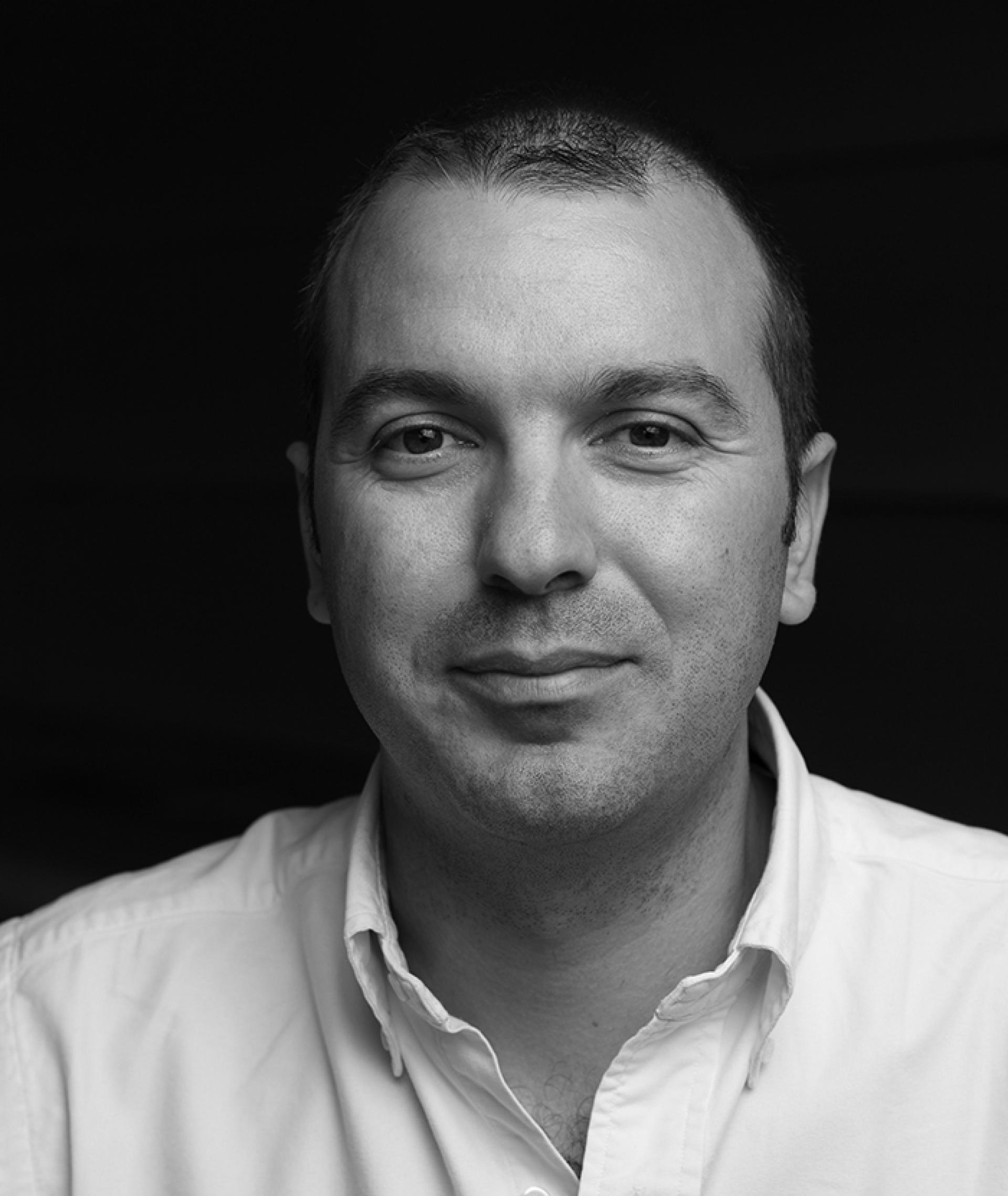
Bekim Ramku is an architect, urban designer,curatorand criticbased in Kosovo. Apart from running Kosovo Architecture Foundation (KAF) and Prishtina Architecture Week (PAW) Bekim heads an Office of Urban Design+Architecture a multidisciplinary practice based in Prishtina. He received his Architecture Engineering Diploma from Prishtina University and his Masters in Housing and Urbanism from the AA School of Architecture in London. He also served as a Research Fellow at MIT’s Department of Urban & Spatial Planning in Cambridge, USA. Bekim is the founding chair of the DoCoMoMo National Chapter in Kosovo and founding member of the Future Architecture Platform.
He serves as a consultant and expert for European and Global agencies and initiatives, as an independent expert for the Mies Van der Rohe Awards, as an international expert for Bloomberg’s “Global Designing Cities Initiative”, and as an Architecture and Planning Consultant for the World Bank GSURR. Previously, he served as the Curatorial Advisor to Martino Stierli, the Philip Johnson Head Curator of Architecture and Design at the Museum of Modern Art in New York, and as the Commissioner to the Kosovo Pavilion at the Venice Biennale Architecture Exhibition in 2012 and 2014. Past three years he also served as an advisor to the Kosovo Minister of Culture.
